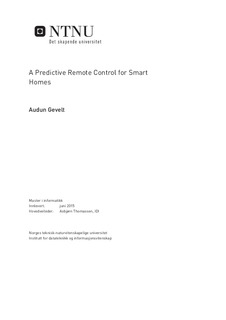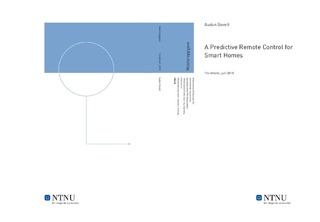| dc.description.abstract | In this thesis we improve upon the traditional smart phone remote control system for smart homes by adding a predictive component to the user interface. Our goal is to minimize the time it takes for the user to interact with smart home devices through the remote control. To achieve this goal, we locate and compare two prediction algorithms with regards to keeping the system fast and battery-friendly. Additionally, we explore the capabilities of the Android user interface to utilize prediction in a way that minimizes interaction time. We find that we can best utilize prediction in the user interface by keeping the most likely devices on the lock screen, through the use of Android's expanded notification functionality. A separate app screen is accessed when the device can not be found in the expanded notification.
To validate our system, we build a model of our system and a separate commercial system, which we then compare with regard to the time metric. The results show that our system is faster in most cases.
Our work proves that with little extra effort, it is possible to decrease the user interaction time by several seconds in a smart phone remote control system for smart homes. | |

